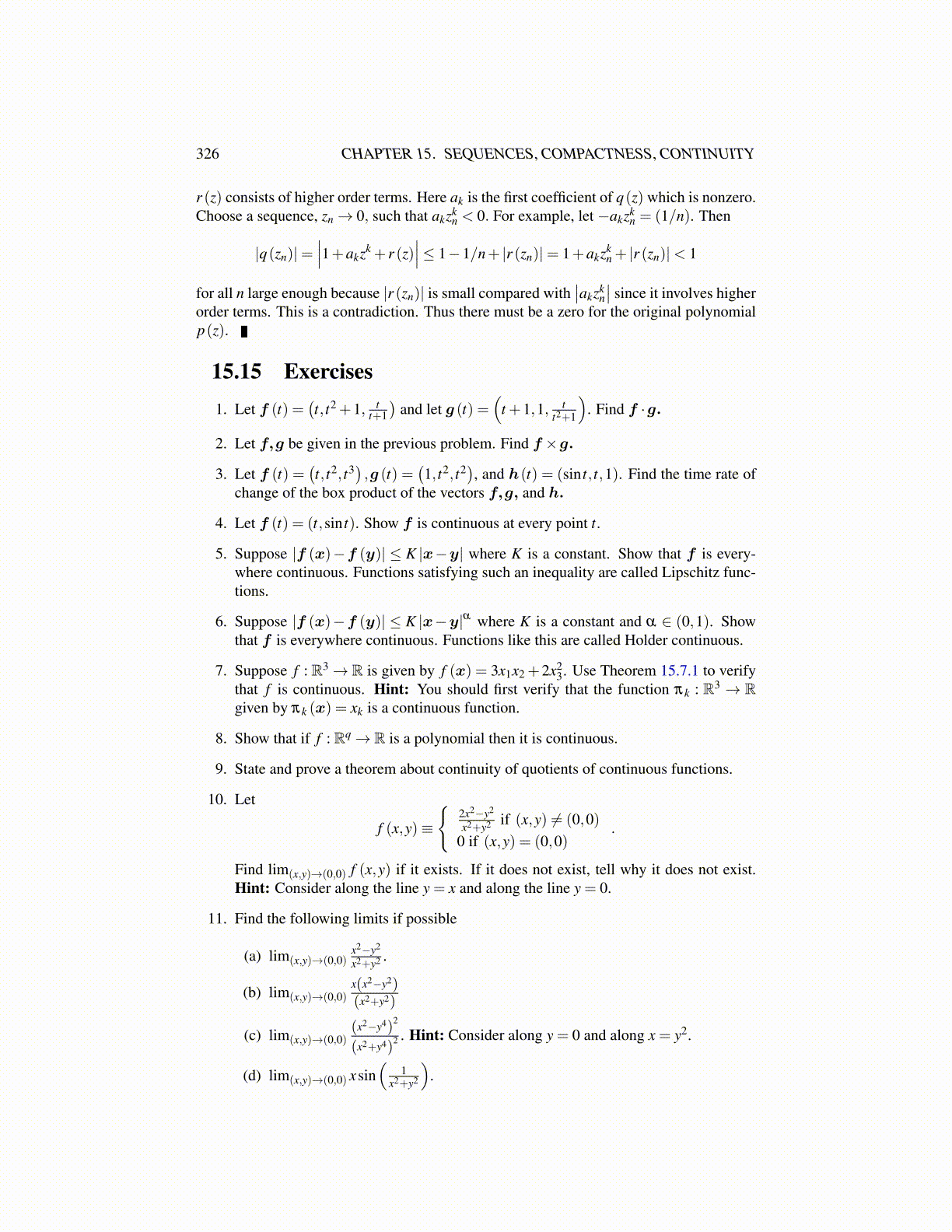
326 CHAPTER 15. SEQUENCES, COMPACTNESS, CONTINUITY
r (z) consists of higher order terms. Here ak is the first coefficient of q(z) which is nonzero.Choose a sequence, zn → 0, such that akzk
n < 0. For example, let −akzkn = (1/n). Then
|q(zn)|=∣∣∣1+akzk + r (z)
∣∣∣≤ 1−1/n+ |r (zn)|= 1+akzkn + |r (zn)|< 1
for all n large enough because |r (zn)| is small compared with∣∣akzk
n∣∣ since it involves higher
order terms. This is a contradiction. Thus there must be a zero for the original polynomialp(z).
15.15 Exercises1. Let f (t) =
(t, t2 +1, t
t+1
)and let g (t) =
(t +1,1, t
t2+1
). Find f ·g.
2. Let f,g be given in the previous problem. Find f ×g.
3. Let f (t) =(t, t2, t3
),g (t) =
(1, t2, t2
), and h(t) = (sin t, t,1). Find the time rate of
change of the box product of the vectors f,g, and h.
4. Let f (t) = (t,sin t). Show f is continuous at every point t.
5. Suppose |f (x)−f (y)| ≤ K |x−y| where K is a constant. Show that f is every-where continuous. Functions satisfying such an inequality are called Lipschitz func-tions.
6. Suppose |f (x)−f (y)| ≤ K |x−y|α where K is a constant and α ∈ (0,1). Showthat f is everywhere continuous. Functions like this are called Holder continuous.
7. Suppose f : R3 → R is given by f (x) = 3x1x2 +2x23. Use Theorem 15.7.1 to verify
that f is continuous. Hint: You should first verify that the function πk : R3 → Rgiven by πk (x) = xk is a continuous function.
8. Show that if f : Rq → R is a polynomial then it is continuous.
9. State and prove a theorem about continuity of quotients of continuous functions.
10. Let
f (x,y)≡
{2x2−y2
x2+y2 if (x,y) ̸= (0,0)0 if (x,y) = (0,0)
.
Find lim(x,y)→(0,0) f (x,y) if it exists. If it does not exist, tell why it does not exist.Hint: Consider along the line y = x and along the line y = 0.
11. Find the following limits if possible
(a) lim(x,y)→(0,0)x2−y2
x2+y2 .
(b) lim(x,y)→(0,0)x(x2−y2)(x2+y2)
(c) lim(x,y)→(0,0)(x2−y4)
2
(x2+y4)2 . Hint: Consider along y = 0 and along x = y2.
(d) lim(x,y)→(0,0) xsin(
1x2+y2
).